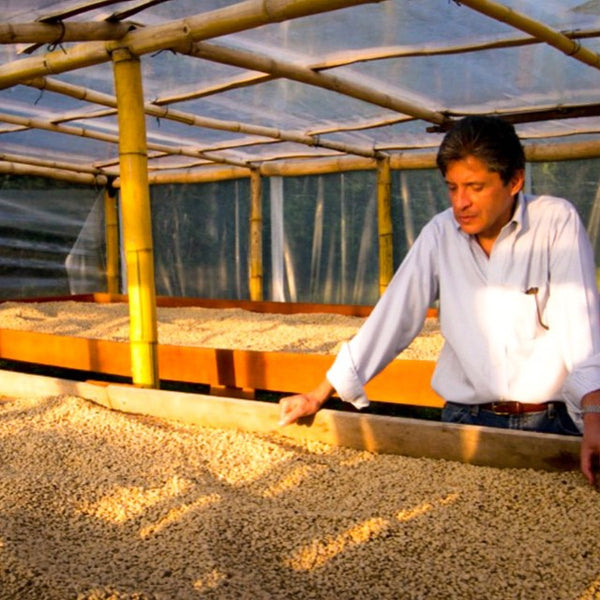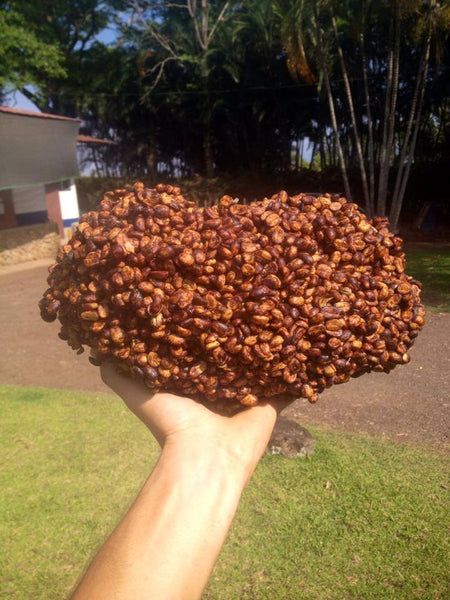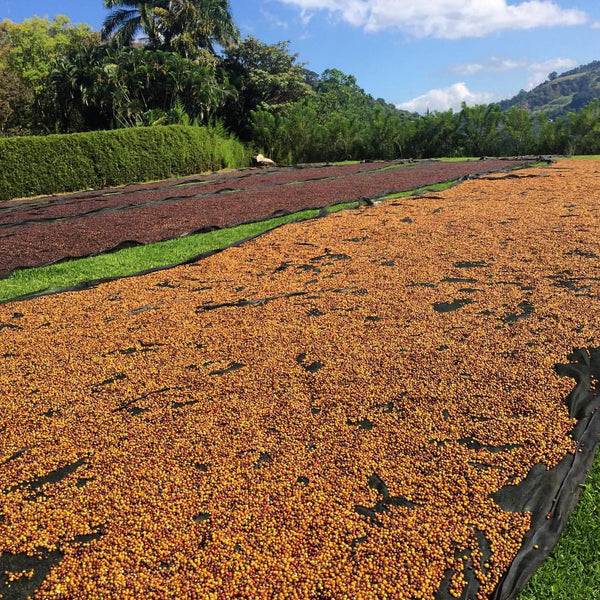

This is a very exciting opportunity to taste three remarkable coffees from a single farm’s lot of a single variety. Because the processing method is the only variable with this trio of coffees, we gain a rare glimpse into exactly what effect coffee processing has on the final cup. We are thrilled to be partnering with Alberto Guardia from Hacienda Sonora to present these astonishing coffees.
The three processing methods on showcase are the Washed Process, the Honey Process and the Natural Process. Coffee is the seed of a sweet fruit, and these the three processing methods are special because of how much of that sweet fruit pulp they each leave on the bean during the drying process, before being washed off completely.

In the Washed Process, the beans are removed of their pulp and briefly fermented to remove any excess fruit that is clinging to the outside of the bean. They are then washed clean, and allowed to dry on raised beds.
Alberto Guardia of Hacienda Sonora watching over washed coffee beds:

In the Honey Process, the beans are removed of their pulp as in the Washed Method, but instead of being fermented to remove the excess fruit, the beans are immediately laid on a patio to dry, and the fruit remains on the bean. The sticky fruit that remains on the bean is said to resemble honey--hence the term Honey Process.
Honey Process is a sticky situation. (sorry, not sorry)

In the Natural Process, the beans aren’t pulped at all, and are laid on a patio to dry with the fruit completely intact before washing it off. The coffee seed is infused with all the sugars and flavors from the cherry itself, imparting a very fruit forward cup.
Look at all the natural goodness drying on the farm at Haceinda Sonora.

Tasting notes:
On the cupping table, we found each these coffees to be unique, and distinctive from one another. An interesting way to approach tasting these three coffees that we’ve noticed throughout our cuppings, is to think of a fruit--such as a peach, cherry, or cantaloupe--in various stages of ripeness.
In the Washed Process coffee, we picked up a pleasant nutty characteristic which was reminiscent of toasted hazelnut or almond. There was an pleasant undertone of milk chocolate; a spicy quality that evoked peppercorn, and dried ginger; and an interesting vegetal/leguminous quality that evoked fresh snap peas. The acidity was pleasant, but toyed with an astringency that you might find in an underripe cherry.
In the Honey Process coffee, we noted that the undercurrent of chocolate and peppercorn that we picked up in the Washed was still present, but was a bit more subdued. The mouthfeel was heavier than the Washed, and the body was full, and smooth. There were additional fruit notes--cherry, raspberry, and a faintly savory note that reminded us of cantaloupe.
In the Natural Process coffee, fruit flavors dominated in the cup. The previous chocolate and peppercorn were still present, but reminded us of chocolate-covered strawberry, and cherry cordial. The cantaloupe note that we noticed the Honey Process was present as well, but the melon was full ripe, juicy and sweet.
Alberto was gracious enough to take the extra effort to process this coffee three distinct ways and we couldn't be happier with the result. We have a very limited supply of this special coffee, so if tasting these three coffees interests you or someone you know, order some today while we still have it.

Leave a comment